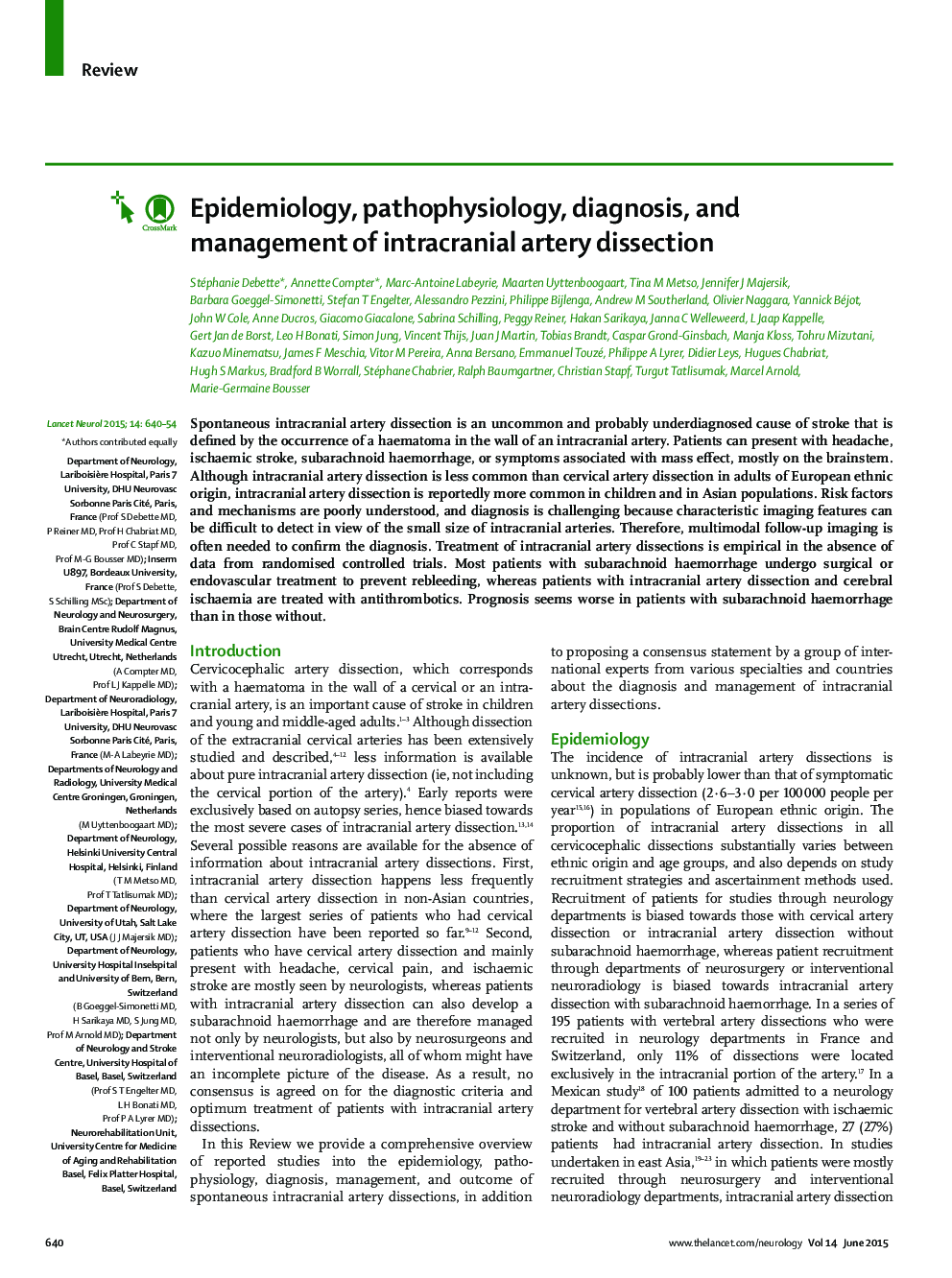| Article ID | Journal | Published Year | Pages | File Type |
|---|---|---|---|---|
| 3066398 | The Lancet Neurology | 2015 | 15 Pages |
SummarySpontaneous intracranial artery dissection is an uncommon and probably underdiagnosed cause of stroke that is defined by the occurrence of a haematoma in the wall of an intracranial artery. Patients can present with headache, ischaemic stroke, subarachnoid haemorrhage, or symptoms associated with mass effect, mostly on the brainstem. Although intracranial artery dissection is less common than cervical artery dissection in adults of European ethnic origin, intracranial artery dissection is reportedly more common in children and in Asian populations. Risk factors and mechanisms are poorly understood, and diagnosis is challenging because characteristic imaging features can be difficult to detect in view of the small size of intracranial arteries. Therefore, multimodal follow-up imaging is often needed to confirm the diagnosis. Treatment of intracranial artery dissections is empirical in the absence of data from randomised controlled trials. Most patients with subarachnoid haemorrhage undergo surgical or endovascular treatment to prevent rebleeding, whereas patients with intracranial artery dissection and cerebral ischaemia are treated with antithrombotics. Prognosis seems worse in patients with subarachnoid haemorrhage than in those without.
